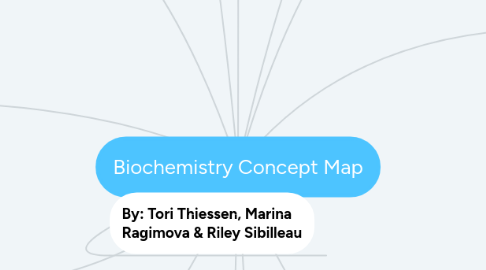
1. Pyruvate Dehydrogenase
2. Fatty Acid Oxidation
2.1. apolipoproteins/Lipoproteins (Chylomicrons, VLDL, IDL,LDL, HDL)
2.2. Mobilization of Lipids for oxidation (summary)
3. Lipid Synthesis
3.1. Glucagon
3.1.1. Ubiquinone (Q)
3.1.1.1. carries electrons within the membrane (shuttle between protein complexes)
3.2. beta-oxidation
3.3. fatty acid synthesis
3.3.1. beta-oxidation
3.3.2. cholesterol synthesis (4 stages)
3.3.2.1. roughly 30-40 enzyme catalyzed reactions
4. Urea Cycle & N-fixation
5. Nucleotide Metabolism
5.1. biosynthesis and degradataion
5.1.1. purine & prymidine synthesis
5.1.2. formation of deoxyribonucleotides
5.1.3. nucleotide degradation
6. Pentose Phosphate Pathway
6.1. has precursors
6.1.1. G6P
6.2. no ATP consumed or produced
6.3. has products
6.3.1. ribose-5-phosphate
6.3.1.1. important in synthesis of DNA and RNA
7. By: Tori Thiessen, Marina Ragimova & Riley Sibilleau
8. Glycolysis
8.1. has a precursor
8.1.1. Glucose
8.2. has products
8.2.1. Pyruvate
8.2.2. ATP
8.2.3. NADH
8.2.3.1. converted to intermediates
9. Citric Acid Cycle
9.1. uses
9.2. has products
9.2.1. ATP
9.2.2. FADH2
9.2.3. NADH
10. Electron Transport Chain
10.1. ATP Synthesis
10.1.1. 3 mechanisms for ATP synthesis:
10.1.1.1. 1. Oxidative phosphorylation
10.1.1.2. 2. Photophosphorylation
10.1.1.3. 3. Substrate-level phosphorylation
10.1.2. Oxidation-reduction reaction
10.1.2.1. proton gradient
10.1.3. ATP is most commonly used in group transfer reactions to 'fix' anabolic reaction mechanisms
10.1.4. has precursors
10.1.4.1. ADP
10.1.4.2. Pi
10.2. 6 Protein components
10.2.1. Prosthetic groups
10.2.1.1. carry the electrons
10.2.1.2. help amino acids redox
10.2.1.3. Vitamin-based
10.2.1.3.1. Riboflavin
10.2.1.4. Mineral-based
10.2.1.4.1. Fe
10.2.1.4.2. Cu
10.2.2. lipid componenet
11. Oxidative Phosphorylation
11.1. has products
11.1.1. NADH
11.1.1.1. enters into complex I
11.1.2. Succinate
11.1.2.1. enters into complex IIA
11.1.3. L3P
11.1.3.1. enters into complex IIB
12. Photosynthesis
12.1. has a precursor
12.1.1. CO2
12.1.2. Light (energy)
12.1.3. H2O
12.1.4. NADP+
12.1.5. ATP
12.2. has products
12.2.1. Triose phosphates
12.2.1.1. which are converted to
12.3. Calvin Cycle
12.3.1. Carbon fixation
12.3.2. Carbon Reduction
12.3.3. Acceptor Regneration
13. Fermentation
13.1. Ethanol Fermentation
13.1.1. uses
13.1.2. has products
13.1.2.1. NAD+
13.1.2.2. Ethanol
13.2. Homolactic Fermentation
13.2.1. uses
13.2.2. has products
13.2.2.1. NAD+
13.2.2.2. Lactate
13.2.2.2.1. can be onverted to

